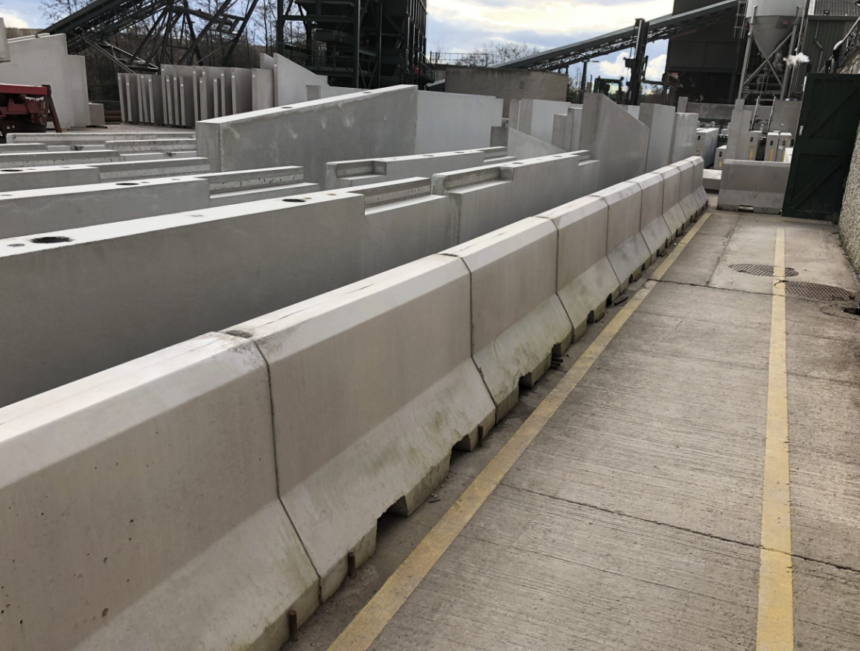As you drive along a busy highway, imagine being surrounded by concrete barriers that make you feel safe and secure and help you navigate your way safely. There are a lot of important parts of modern infrastructure that are made up of these seemingly simple structures. They shape roads and keep drivers safe.
Explore the ins and outs of these important structures in this complete guide to learning concrete barriers in 2024.
Types of Concrete Barriers
Temporary Vertical Concrete Barriers
These barriers are used for short-term projects like road construction or event management. They’re tall, sturdy, and designed to prevent vehicles from crossing into restricted areas. The vertical shape makes them highly visible and effective at redirecting traffic away from hazardous zones.
Jersey Barriers
Jersey barriers are common on highways and construction sites. They’re long, horizontal barriers with a sloped face, resembling the shape of the state of New Jersey.
These barriers are heavy and durable, often made of concrete or other robust materials. They provide excellent protection against vehicle impacts and are versatile enough to be used for various purposes like traffic management, perimeter security, or crowd control.
Low-Profile Barriers
Low-profile barriers are shorter and less imposing than traditional concrete barriers. They’re typically used in urban areas, parking lots, or pedestrian zones to separate traffic lanes or protect pedestrians from vehicles.
Despite their reduced height, low-profile barriers are still effective at preventing vehicles from veering off course and can be aesthetically pleasing in urban environments. They may come in various designs, including simple concrete blocks or decorative barriers with built-in planters or seating elements.
Benefits of Using Concrete Barriers
Safety and Security
Concrete barriers provide a robust physical barrier that enhances safety by preventing unauthorized access to restricted areas. They are commonly used along highways, construction sites, and event venues to protect pedestrians, workers, and property from vehicle intrusions.
By creating a physical barrier, they help prevent accidents, mitigate the risk of vehicle collisions, and enhance overall security.
Traffic Management and Control
Concrete barriers play a crucial role in traffic management by defining lanes, redirecting traffic flow, and guiding drivers safely through construction zones or hazardous areas. They help maintain order on roadways, prevent lane encroachments, and minimize the risk of head-on collisions.
Additionally, they can be strategically placed to channel traffic during emergencies or special events, ensuring efficient traffic flow and reducing congestion.
Durability and Longevity
Unlike temporary barriers made of plastic or metal, concrete barriers offer long-term reliability and require minimal maintenance. Their solid construction ensures they remain in place and retain their effectiveness over time, making them a cost-effective solution for both short-term and permanent applications.
Additionally, their resistance to corrosion and degradation ensures they maintain their structural integrity, providing reliable protection for years to come.
Applications of Concrete Barriers
Road Construction and Highway Safety
Concrete barriers are commonly used in road construction and along highways to enhance safety for motorists and pedestrians. They serve as a protective barrier between opposing lanes of traffic, reducing the risk of head-on collisions and crossover accidents.
Additionally, they help delineate lanes, guide traffic, and provide protection in areas where roadwork is underway. Concrete barriers are often installed along medians and shoulders to prevent vehicles from veering off the road and to minimize the impact of accidents.
Construction Sites and Work Zones
Concrete barriers are essential for creating safe work zones in construction areas. They are used to protect workers, equipment, and the public from potential hazards, such as moving vehicles or falling debris.
Event Management and Crowd Control
Concrete barriers play a vital role in event management and crowd control at large gatherings, festivals, and public events. They are strategically placed to create secure perimeters, control pedestrian flow, and prevent unauthorized access to restricted areas.
Additionally, they help prevent overcrowding, maintain order, and ensure the safety and security of event participants and spectators.
How to Choose the Right Concrete Barriers
1. Have Some Factors to Consider
Before selecting concrete barriers, consider factors such as the intended application, site conditions, and specific requirements. Find out what length, height, and shape are needed to effectively address safety and security issues.
Be sure you have enough protection by looking at things like the amount of traffic, the speed of the vehicles, and the force that could be used in an accident. Additionally, consider factors such as installation requirements, maintenance needs, and the availability of anchoring options.
2. Compliance with Safety Standards and Regulations
It’s crucial to choose concrete barriers that comply with relevant safety standards and regulations. When looking for barriers, make sure they meet the standards for being able to withstand impacts, not deflecting too much, and being safe in a crash.
In addition to meeting local, state, and federal standards, make sure that the barriers have been approved by a recognized regulatory body. Verify that the barriers are designed and tested to withstand the expected loads and conditions specific to their intended application.
3. Budget and Cost Considerations
If needed, balance upfront costs with long-term benefits to select barriers that offer the best value for your investment. Consider factors such as warranty coverage, replacement costs, and the potential for future upgrades or modifications. As long as your budget allows it, pick barriers that offer the level of protection and functionality you want.
Explore and Learn More About Concrete Barriers
From understanding their various types and functionalities to exploring innovative uses and best practices, the world of concrete barriers is rich with possibilities. For those seeking practical solutions, consider exploring options like concrete barriers for hire to meet your specific project needs. Start your journey of exploration today!














